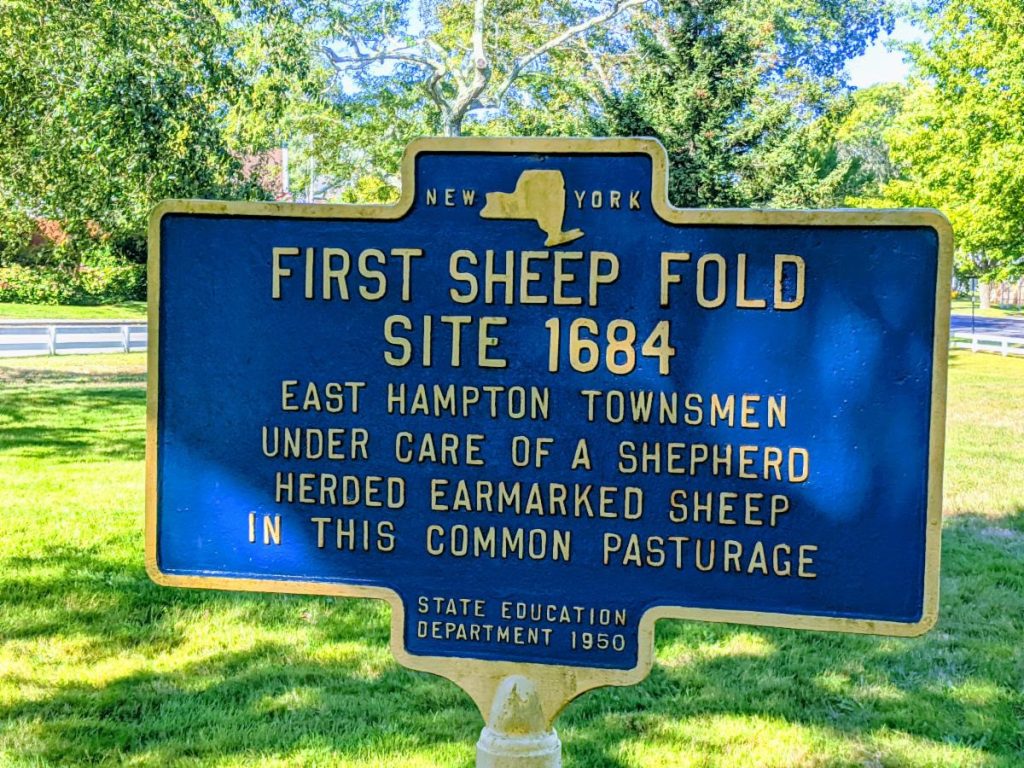
There were so many wonderful holiday celebrations across East Hampton Town last week. On Saturday, East Hampton Village hosted the lighting of the Christmas tree in the “Sheep Fold.” I was surprised to discover that very few people knew where the Sheep Fold is located, which is between Pantigo Road, Egypt and Gay Lanes, despite the sign commemorating its history as a sheep pasture. I was even more surprised to learn that there’s been a difference of opinion about whether the enclosure should be called a sheep fold or a sheep pound. Although identified as a sheep fold on the sign installed in 1950, Helen Rattray told T.H. Breen – who interviewed her in the 1980s for his book, Imagining the Past: East Hampton Histories – that it was actually a sheep pound.
In a column for the East Hampton Star in 2005, Helen explained further, “The Star led a long battle to preserve ‘sheep pound’ as the name of the public land at the intersection of Montauk Highway with Gay and Egypt Lanes in East Hampton Village. Carleton Kelsey, an old-timer who was then the Amagansett librarian and town historian, backed us up. Newcomers had taken to calling the land the sheep fold, although the distinction between a pound and a fold is a fine one. In Colonial times, sheep belonging to various residents roamed the byways; from time to time, they were impounded — thus, the sheep pound. The word fold implies a different kind of enclosure, like a yard.”
I think there’s ambiguity about which term was used during the colonial era. While sheep were certainly impounded according to Town records in the 17th and 18th centuries, they were also “folded” or occasionally “let out to fould.” The most common description I found in the Town Trustee minutes was “sheep pasture.”
By the early 20th century, the area functioned as a junk yard until 1915 when the LVIS – with permission from the property’s owner, David Gardiner – cleared the debris, fenced, and seeded the area with grass. During the 1930s, when the Star reported on several issues with the fence – including mischievous children tearing it down and drivers knocking it over while trying to park – it was always referred to as the sheep pound. Similarly, the LVIS advertised looking for someone to mow the “sheep pound,” but at the same time, their “Sheep Fold Committee” oversaw the enclosure’s management.
After a failed attempt to rezone the area so a gas station could be built on the site, Alice Carter Dickerman purchased the land in December 1947 and donated it to the Village of East Hampton. On the map that was printed the following year to celebrate East Hampton’s 300th anniversary, the area was listed as the “Sheep Fold.” Now in the 21st century, East Hampton Village continues to maintain the area and, at least since the 1960s, has lighted a Christmas tree in the Sheep Pound (or Fold, if you prefer) just like last week.
If you have a preference about whether the enclosure should be called a sheep fold or a sheep pound, please tell us on Instagram or Facebook.
